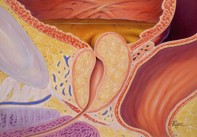Advances in the management of benign prostatic hyperplasia
Over the past 10 years, the management of benign prostatic hyperplasia (BPH) has changed dramatically. Medical therapy is increasingly being utilised as more selective medications have become available and understanding of the natural history of the condition has improved. This is enabling us to risk-stratify patients and delay or avoid surgery all together. The benefits of combination medical therapy in reducing the long-term risk of urinary retention and the need for surgery have been demonstrated, and the American Urological Association (AUA) has released new guidelines on the management of BPH supporting its use. Furthermore, new surgical therapies have emerged in recent years, with laser treatment becoming widely available and showing results that are comparable to traditional transurethral resection of prostate (TURP).

